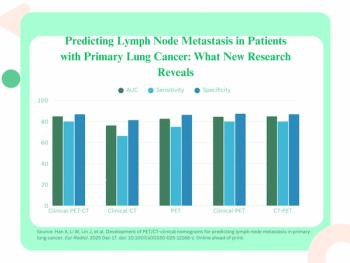You Can’t Have It Your Way in Radiology
There are no modifications to the order when it comes to CMS and insurance company criteria for reimbursement.
I have had a mildly adversarial relationship with restaurant menus for a long time. I became a pescatarian in my teens after a couple of fam went harder-core veggie. Their reasons convinced me to avoid land-based meat, and I didn’t miss it at all. Much more recently, I realized that I was regularly eating a few things that weren’t particularly healthy and started making an even stronger effort at choosing smartly.
Even “mildly adversarial” is probably putting it too harshly. I actually like the simplicity of having fewer things to choose from. Sometimes I will even know not to go to a particular establishment if it doesn’t offer anything suitable although I never take it so far as to make things a hassle for folks I am dining with. I prioritize going with the flow, bending my own rules rather than being a high-maintenance stickler.
Some places make it easier for me than others. One example is making me a burrito with fish instead of beef. When I see signage like “No substitutions,” however, I don’t bother barking up the wrong tree. If that is what a place believes it needs to do to keep the operation running smoothly or functioning at all, it is not my place to test them. They have determined that flexibility needs to be on the part of their customers, not waitstaff or cooks.
I found myself thinking about this last week. I was reading an abdominal MR that had been prompted by a right upper quadrant ultrasound with cirrhosis. Pulling up the sono, I saw that it hadn’t been a Doppler, but in addition to the RUQ stuff, it included the enlarged spleen.
Unlike restaurants (with the exception of franchises that have to abide by their parent organizations), radiology doesn’t usually get to set its own menus. If you are in the health-care biz and want to be paid by CMS or insurance companies, you live by their rules. To successfully claim that you rendered service A, you need to meet criteria 1, 2, and 3.
Unfortunately, despite an ever-increasing encyclopedia of service types, there are plenty of situations wherein what we do doesn’t quite match any of the CMS/insurance categories. If the sonographer adhered to the RUQ sono order, the spleen wouldn’t have been imaged and a tidbit of cirrhosis-relevant info would not have been documented.
Instead, the sonographer and associated radiology office did what was best for the patient (and referrer) and performed a bit of extra service that wouldn’t be paid for. The radiologist reading the case didn’t get credited for any extra fraction of an RVU but incrementally increased his medmal liability. The customer/patient wasn’t forced to be flexible, and the monolithic third-party payors certainly weren’t. We radfolk are usually the ones left holding the bag.
Not all rad facilities would have handled this the same way of course. Some would have dogmatically done the RUQ sono, forcing a separate subsequent order for a “limited abdomen” to bring the patient back if anyone wanted to look at the spleen. Alternatively, since a subsequent MR will more than adequately measure the spleen, nothing special might need doing. Some offices might have screened the original order and asked the referrer to put in for a complete abdomen instead.
In a fantasy land I like to occasionally visit, this is a non-issue. In the fantasy world, health-care professionals function like pros in law and finance. We quote an hourly rate for our services, do whatever is requested, and charge for the time it took. Flexibility is shared between all parties (including third-party payors if any are in the mix).
There is no “not on the menu” situation. If I have the skills and equipment necessary for the service you want, I can render it. If, for whatever reason, you show up wanting a sono that covers the gallbladder, left kidney, and right inguinal canal, I can do precisely that. I won’t waste your time covering you with sono gel elsewhere, and I won’t bog your clinician down with all of the benign incidental findings I made in half a dozen other organs.
In our real world, between administrative hassles and reduced reimbursements, the regulatory/payor complex would squelch such behavior. Much like an 800-lb gorilla, it doesn’t have to be flexible at all. Everyone else jumps through its hoops to get or provide needed health care.
That is not just limited to things like adding on sonography of a clinically relevant spleen or carrying a pelvic CT halfway through the thighs because the referrer asked for it. We also get told to do things that patients and referrers didn’t want, things that we know have no clinically valid reason for doing.
Accordingly, we wind up reporting things like contrast dosage, how automatic exposure control was utilized, and that we did a “time out” before hands-on procedures. We dutifully comment on anatomic structures whether or not we actually saw them well (“Aorta and IVC obscured” helps a lot on abdominal US, doesn’t it?).
The excess verbiage goes on to waste referrers’ time, annoying or confusing them. Perhaps they read through our reports a little less carefully as they are bombarded with an ever enlarging “wall of text” that they know says nothing of importance.
Going back to the restaurant metaphor, they just wanted a sandwich, but the immutable menu says they get a boatload of fries with that. God forbid they are trying to lose some weight or just didn’t want wastage committed on their behalf.
Newsletter
Stay at the forefront of radiology with the Diagnostic Imaging newsletter, delivering the latest news, clinical insights, and imaging advancements for today’s radiologists.





























